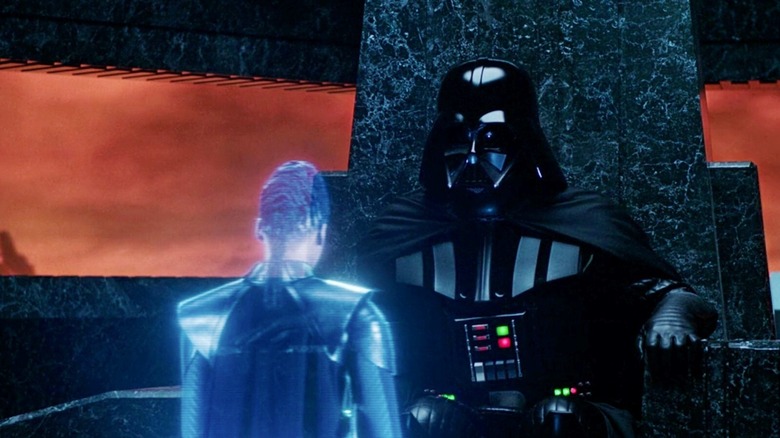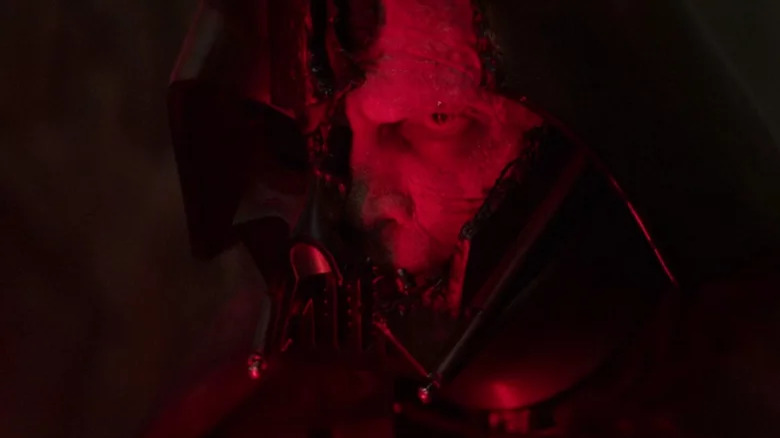Star Wars: Obi-Wan Kenobi's Younger Darth Vader Required A Complete Costume Upgrade
Lucasfilm's "Obi-Wan Kenobi" series was largely forgotten as soon as it aired, and not without reason. Although the show was a nostalgia feast for fans of the prequels and it also gave us a fantastic Leia story (one of the best in the entire franchise), it felt disappointingly derivative. For one, its climactic final battle between Obi-Wan and Darth Vader was lifted straight from "Star Wars Rebels," and the story of the Third Sister was rather similar to the plot of "Jedi: Fallen Order."
Still, seeing Ewan McGregor as Obi-Wan again, this time carrying the weight of "Revenge of the Sith" on his shoulders, was special for fans. Also special: Hayden Christensen's return to the franchise. His reunion with Obi-Wan remains quite emotional, and seeing Vader in a post-prequels and post-"The Clone Wars" era, with the context of all those stories, lent his appearance an extra poignancy.
But as cool as Christensen's return was, there were a lot of practical issues to figure out first, like building a new Darth Vader suit that would fit the actor, and incorporating the physicality Vader needed in this show compared to previous "Star Wars" titles.
Speaking with Variety, costume designer Suttirat Larlarb said mobility dictated major changes to the classic Vader suit. "The extreme physical demands of the showdown between Obi-Wan (Ewan McGregor) and Darth Vader is what governed our need to re-think how to make Darth Vader for our show," she said. "We have other processes that allow for our Darth Vader, a younger one in the 'Star Wars' timeline, to be more mobile and physical, helmet-to-toe. The armor he wears needed to move with his body in a way that allowed the fights to happen fluidly — and not prevent him from doing anything that was dreamed up."
'I was but the learner, but now I am the master'
In another interview with The Art of Costume podcast, Larlarb expanded on the redesign, explaining that there are simple, practical reasons to change the original design. "When you design a thing like this for another body, another head, there are things that have to fit that person," she said. "That person is still performing, and they need to embody this thing."
Indeed, many of the changes to Darth Vader's suit of armor in "Obi-Wan Kenobi" came about simply because Hayden Christensen is not David Prowse (for one thing, Christensen is six feet tall, while Prowse stood at six feet, six inches). As Larlarb said, it was never about saying "let's just make [the suit] blue," but instead, executing tweaks that the audience would hopefully never notice. "They were engineering changes," she added. "We have different materials at our disposal, so we can make things lighter and more flexible."
Historically, the Darth Vader suit is not unlike the Batman suit in that it is rather uncomfortable to wear and doesn't allow for much mobility. As Larlarb pointed out, this is the first live-action Darth Vader that can properly lift up his arms. If you want to think of it in terms of canon, you could, as Larlarb explained, think of Vader as outgrowing his suit and adding new parts throughout the years (which makes sense, considering how often his helmet apparently breaks). And it's worth noting this is far from the first time the suit has changed between projects: Every single film has changed the Vader look in one way or another, most noticeably in the jump from the original "Star Wars" to "The Empire Strikes Back."

